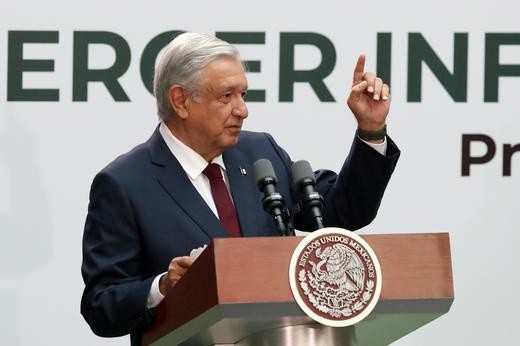Despite Weak Growth of Mexico's Economy, President Claims it is Rising

In spite of the economic challenges currently plaguing Mexico, President Andres Manuel Lopez Obrador claims the economy is doing 'very well.' In a public statement on Friday, Lopez Obrador showed no concern of the primary data showing the 0.1 percent growth of Mexico's economy in the 3rd quarter, when the country almost went into a recession period.
During the Mexican president's regular news announcement, he claimed that "there is no recession." According to President Obrador, the economic growth in the country is slow because the Mexican government is not no longer "spending to spend."
The leftist politician had recently taken the position to lead the country last December. During his first month, he had promised the people of Mexico that he will improve the economic growth of the country to 4% more or less every year. The economic growth of Mexico can be best understood through understanding its past and the people who influenced its outcomes.
One instrumental figure who can understand Mexico's economy is Agustín Guillermo Carstens. He is an economist serving as the general manager of the Bank of International Settlements since December of 2017.
According to Carstens, in the past, the Mexican Peso had not changed from 12.50 per US Dollar for 22 years. It was properly managed until September of 1976 when the term of Luis Echeverria as the Mexican President had ended. After that event in 1976, the country had encountered mountains of problems and catastrophes involving natural calamities and economic downfalls.
Just a month after September 1976, the value of the Mexican Peso had dropped to 22.50 Pesos per US Dollar. This event had greatly affected the lifestyle of the majority of the Mexican population. Basic goods such as milk, meat products, and sugar were a commodity in grocery store shelves.
After a decade of the continuous weakening of the Mexican currency, the country had defaulted payment for its debts and national banks. It also faced triple-digit inflation. Since then, the Mexican currency continued to fall in value from 148 pesos per US dollar in 1982 to 3,400 peso per US dollar in 1993. Because of these factors, the country was unable to provide sufficient jobs for the current working population.
Despite the crises that the country had encountered in the past, new generation leaders tend to learn from the mistakes of the past leaders and provide their best efforts to revive the once-stable Mexico's economy.
On August 1977, a year after former President Luis Echeverria left the position as the leader of the country, the Instituto Tecnológico Autónomo de México (ITAM) had accepted large volumes of extraordinary economic students that in the present is contributing to the changes in Mexico's economy.
Among these students was Carstens. He is among the people who had contributed to the growth of the Mexico's economy. Together with his colleagues, they can stabilize the Mexican Peso and the yearly inflation to just 4% every year. His team had also helped manage the debt of the country. Their efforts had even helped the country's banks from the worldwide crisis during the years 2008 to 2009.
Subscribe to Latin Post!
Sign up for our free newsletter for the Latest coverage!















